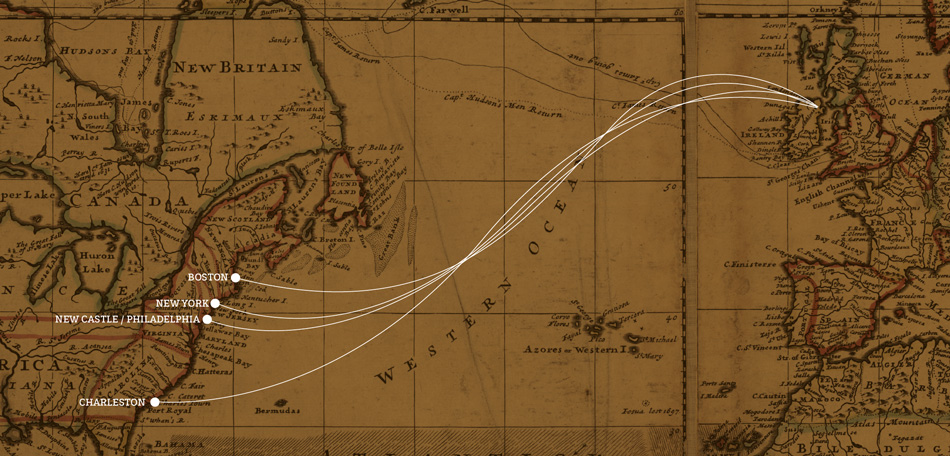1700s - The Voyage to America
The passage
By any standard, the passage to America was daunting. First of all, emigrants had to travel, mostly by foot, to an emigration port. Depending on the weather conditions, the voyage itself lasted typically 6–10 weeks. The cost of a passage could be £3 – £9. However, many emigrants went out as indentured servants and paid their passage through working for an agreed period after they arrived in America.
Ulster's emigration ports Belfast and Londonderry were the most important emigration ports in Ulster, followed by Newry, Larne and Coleraine/Portrush. These ports were part of the transatlantic trading network that connected the Old and New Worlds. Vessels arriving in Ulster ports brought cargoes including flaxseed, which was vital to the local linen industry, and returned to America laden with passengers.
Ocean-born Mary
'Ocean-born Mary' was born in 1720 aboard the ship on which her parents, James and Elizabeth Wilson, were sailing to America. The story goes that a pirate attacked their vessel, and threatened all on board with death, but the newborn baby's cries excited his pity; he said if they named the child Mary, after his mother, he would spare the whole ship. Mary spent the rest of her life in Londonderry, New Hampshire.
The story of the Seaflower
Of the countless thousands of migrants from Ulster who crossed the Atlantic in the eighteenth century, few had as horrendous an experience as the passengers on the Seaflower that sailed from Belfast in 1741. By the time the ship arrived in Boston after 18 weeks at sea, over 40 passengers had died and the remainder had been reduced to cannibalism in order to survive. Thankfully, instances such as this were rare.


Detail from ‘A new & correct map of the whole World’, 1719 Courtesy Library of Congress Geography and Map Division
